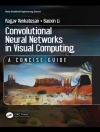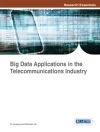Presents the components, challenges, and solutions of wireless automation as enablers for industry 4.0
This timely book introduces the state of the art in industrial automation techniques, concentrating on wireless methods for a variety of applications, ranging from simple smart homes to heavy-duty complex industrial setting with robotics accessibility. It covers a wide range of topics including the industrial revolution enablers, applications, challenges, their possible solutions, and future directions.
Wireless Automation as an Enabler for the Next Industrial Revolution opens with an introduction to wireless sensor networks and their applications in various domains, emphasizing industrial wireless networks and their future uses. It then takes a look at life-span extension for sensor networks in the industry, followed by a chapter on multiple access and resource sharing for low latency critical industrial networks. Industrial automation is covered next, as is the subject of ultra reliable low latency communications. Other topics include: self healing in wireless networks; cost efficiency optimization for industrial automation; a non event-based approach for non-intrusive load monitoring; wireless networked control; and caching at the edge in low latency wireless networks. The book finishes with a chapter on the application of terahertz sensing at nano-scale for precision agriculture.
- Introduces the future evolving dimension in industrial automation and discusses the enablers of the industrial revolution
- Places particular emphasis on wireless communication techniques which make industrial automation reliable, efficient, and cost-effective
- Covers many of the associated topics and concepts like robotics, AI, internet-of-things, telesurgery, and remote manufacturing
- Of great interest to researchers from academia and industry who are looking at the industrial development from various perspectives
Wireless Automation as an Enabler for the Next Industrial Revolution is an excellent book for telecom engineers, Io T experts, and industry professionals. It would also greatly benefit researchers, professors, and doctorate and postgraduate students involved in automation and industry 4.0.
Mục lục
List of Contributors xiii
Preface xvii
1 Industrial Wireless Sensor Networks Overview 1
Mohsin Raza and Huan X. Nguyen
1.1 Introduction 1
1.2 Industry 4.0 3
1.3 Industrial Wireless Sensor Networks (IWSNs) 6
1.4 Applications of IWSNs 8
1.4.1 Feedback Control Systems 8
1.4.2 Motion and Robotics 9
1.4.3 Safety Applications 9
1.4.4 Environmental Monitoring 9
1.4.5 Machine/Structural Health Monitoring 10
1.5 Communication Topologies in IWSNs 10
1.6 Research Developments and Communications Standards for Industry 11
1.6.1 IEEE 802.15.4 12
1.6.2 IEEE 802.15.4e 13
1.6.3 Zigbee 13
1.6.4 Wireless HART 14
1.6.5 ISA100.11a 14
1.6.6 6Lo WPAN 14
Bibliography 15
2 Life-span Extension for Sensor Networks in the Industry 19
Metin Ozturk, Mona Jaber, and Muhammad A. Imran
2.1 Introduction 19
2.2 Wireless Sensor Networks 21
2.3 Industrial WSNs 24
2.3.1 Requirements and Challenges 25
2.3.2 Protocols and Standards 26
2.3.3 IWSN Applications 27
2.4 Life-span Extension for WSNs 28
2.4.1 Energy Harvesting 29
2.4.1.1 Solar Energy Harvesting 31
2.4.1.2 Wind Energy Harvesting 31
2.4.1.3 Radio Frequency Energy Harvesting 32
2.4.1.4 Piezoelectric Energy Harvesting 32
2.4.1.5 Thermal Energy Harvesting 33
2.4.2 Energy Conservation 33
2.4.2.1 Duty Cycling 34
2.4.2.2 Data Driven Approaches 35
2.4.2.3 Mobility Based Approaches 35
2.4.2.4 Q Learning Assisted Energy Efficient Smart Connectivity 36
2.5 Conclusion 40
Bibliography 41
3 Multiple Access and Resource Sharing for Low Latency Critical Industrial Networks 47
Mohsin Raza, Anas Amjad, and Sajjad Hussain
3.1 Introduction 47
3.2 Research Developments 51
3.2.1 CSMA/CA Based MAC Schemes 53
3.2.2 TDMA Based MAC Schemes 53
3.2.3 Multichannel MAC Schemes 54
3.2.4 Priority Based MAC Schemes 55
3.3 Priority Based Information Scheduling and Transmission 56
3.4 Summary 61
Bibliography 61
4 Narrowband Internet of Things (NB-Io T) for Industrial Automation 65
Hassan Malik, Muhammad Mahtab Alam, Alar Kuusik, Yannick Le Moullec, and Sven Pärand
4.1 Introduction 65
4.2 Overview of NB-Io T 65
4.3 NB-Io T Design Characteristics 68
4.3.1 Low Device Complexity and Low Cost 68
4.3.2 Coverage Enhancement (CE) 70
4.3.3 Long Device Battery Lifetime 70
4.3.4 Massive Device Support 71
4.3.5 Deployment Flexibility 72
4.3.6 Small Data Packet Transmission Support 74
4.3.6.1 Control Plane CIo T EPS Optimization (CP) 74
4.3.6.2 User Plane CIo T EPS Optimization (UP) 76
4.3.7 Multicast Transmission Support 76
4.3.8 Mobility Support 76
4.4 NB-Io T Frame Structure 77
4.4.1 Downlink Transmission Scheme 78
4.4.1.1 Narrowband Reference Signal (NRS) 78
4.4.1.2 Narrowband Primary and Secondary Synchronization Signals (NPSS and NSSS) 78
4.4.1.3 Narrowband Physical Broadcast Channel (NPBCH) 79
4.4.1.4 Narrowband Physical Downlink Control Channel (NPDCCH) 79
4.4.1.5 Narrowband Physical Downlink Shared Channel (NPDSCH) 80
4.4.2 Uplink Transmission Scheme 80
4.4.2.1 Demodulation Reference Signal (DMRS) 80
4.4.2.2 Narrowband Physical Random Access Channel (NPRACH) 81
4.4.2.3 Narrowband Uplink Shared Channel (NPUSCH) 81
4.4.3 NB-Io T Design Modification in Relation to LTE 81
4.5 NB-Io T as an Enabler for Industry 4.0 81
4.5.1 Process Automation 83
4.5.2 Human–Machine Interfaces 84
4.5.3 Logistics and Warehousing 84
4.5.4 Maintenance and Monitoring 85
4.6 Summary 85
Bibliography 86
5 Ultra Reliable Low Latency Communications as an Enabler For Industry Automation 89
João Pedro Battistella Nadas, Guodong Zhao, Richard Demo Souza, and Muhammad A. Imran
5.1 Introduction 89
5.2 Opportunities for URLLC in Industry Automation 91
5.2.1 URLLC Industrial Applications 91
5.2.2 New Business Models 93
5.3 Existing Solutions 94
5.3.1 LTE 94
5.3.2 Wireless HART and ISA100.11a 95
5.4 Enabling Technologies 96
5.4.1 Faster Channel Coding 96
5.4.2 Latency Aware HARQ 97
5.4.3 Joint Design 98
5.4.3.1 Communication Model 100
5.4.3.2 Proposed Solution 100
5.4.3.3 Numerical Results and Conclusion 103
5.5 Conclusion 104
Bibliography 104
6 Anomaly Detection and Self-healing in Industrial Wireless Networks 109
Ahmed Zoha, Qammer H. Abbasi, and Muhammad A. Imran
6.1 Introduction 109
6.2 System Design 113
6.2.1 COD Stage 113
6.2.2 COC Stage 115
6.3 Cell Outage Detection Framework 115
6.3.1 Profiling Phase 115
6.3.1.1 Local Outlier Factor Based Detector (LOFD) 119
6.3.1.2 One-Class Support Vector Machine based Detector (OCSVMD) 120
6.3.2 Detection and Localization Phase 122
6.4 Cell Outage Compensation 122
6.5 Simulation Results 124
6.5.1 Simulation Setup 124
6.5.1.1 Parameter Estimation and Evaluation 124
6.5.2 Cell Outage Detection Results 127
6.5.3 Localization 135
6.5.4 Compensation 136
6.6 Conclusion 138
Bibliography 138
7 Cost Efficiency Optimization for Industrial Automation 141
Hafiz Husnain Raza Sherazi, Luigi Alfredo Grieco, Gennaro Boggia, and Muhammad A. Imran
7.1 Introduction 141
7.2 The Evolution of Low Energy Networking Protocols for Industrial Automation 144
7.2.1 Radio Frequency Identification and Near Field Communication 144
7.2.2 Bluetooth 145
7.2.3 Zigbee 145
7.2.4 Bluetooth Low Energy (BLE) 145
7.2.5 Wi-Fi 146
7.2.6 IPv6 Over Low Power Wireless Personal Area Networks (6Lo WPAN) 146
7.2.7 Low Power Wide Area Networks (LPWAN) 146
7.2.7.1 Long Range Wide Area Networks (Lo Ra WAN) 148
7.2.7.2 Sigfox 149
7.2.7.3 Narrowband Io T (NB-Io T) 150
7.3 An Overview of the Costs Involved in Industry 4.0 151
7.3.1 Battery Replacement Cost 152
7.3.2 Damage Penalty 152
7.3.3 Cost Relationships and Trade-off Analysis 152
7.4 Evaluating Costs in an Industrial Environment: A Lo Ra WAN Case study 153
7.4.1 Battery Lifetime of Monitoring Nodes 155
7.4.2 Battery Replacement Cost 156
7.4.3 Damage Penalty 157
7.5 Cost Analysis for Industrial Automation 158
7.5.1 Statistics for Energy Consumption 158
7.5.2 Statistics for Battery Replacement Cost 159
7.5.3 Statistics for Damage Penalty in a Plain Industrial Environment 161
7.5.4 The Cumulative Cost 163
7.6 Cost Optimization through Energy Harvesting in Industrial Automation 164
7.6.1 Extending the Battery Lifetime 165
7.6.2 Tuning the Sensing Interval 165
7.7 Conclusion 168
Bibliography 168
8 A Non-Event Based Approach for Non-Intrusive Load Monitoring 173
Ahmed Zoha, Qammer H. Abbasi, and Muhammad A. Imran
8.1 Introduction 173
8.2 Probabilistic Modelling for Load Disaggregation 175
8.2.1 Model Definition 177
8.2.2 Inference 178
8.3 Experimental Evaluations 180
8.3.1 Experiment Design 181
8.3.2 Feature Sub-Groups 182
8.3.3 Performance Evaluation 183
8.3.3.1 Binary and Multi-State Classification 183
8.4 Live Deployment 187
8.4.1 Energy Estimation 188
8.5 Conclusion 190
Bibliography 191
9 Wireless Networked Control 193
Zhen Meng and Guodong Zhao
9.1 Introduction 193
9.2 Industrial Automation 194
9.3 WNC System Model 196
9.3.1 WNC Model 196
9.3.1.1 Wireless Networks 197
9.3.1.2 Control System 198
9.3.2 WNC System Requirements 199
9.3.2.1 System Structure 199
9.3.2.2 Real-Time Performance 200
9.3.2.3 High Reliability 201
9.3.2.4 Determinism 201
9.3.2.5 Sample Data Traffic and Event Order 201
9.3.3 Analysis of Influencing Factors 202
9.3.3.1 Sampling Period 202
9.3.3.2 Time Delay 202
9.3.3.3 Packet Loss 203
9.4 Network and System Control Co-design 203
9.5 Conclusion 204
Bibliography 204
10 Caching at the Edge in Low Latency Wireless Networks 209
Ramy Amer, M. Majid Butt, and Nicola Marchetti
10.1 Introduction 209
10.2 Living on the Edge 211
10.3 Classifications of Wireless Caching Networks 214
10.3.1 Wireless Caching Architecture 215
10.4 Caching for Low Latency Wireless Networks 217
10.5 Inter-cluster Cooperation for Wireless D2D Caching Networks 218
10.5.1 Proposed Network Model 219
10.5.2 Content Placement and Traffic Characteristics 222
10.5.3 Caching Problem Formulation 224
10.5.3.1 Arrival and Service Rates 224
10.5.3.2 Network Average Delay 225
10.5.4 Proposed Caching Schemes 226
10.5.4.1 Caching Popular Files 226
10.5.4.2 Greedy Caching Algorithm 227
10.5.4.3 Outage Probability 228
10.6 Results and Discussions 230
10.7 Chapter Summary 234
Bibliography 235
11 Application of Terahertz Sensing at Nano-Scale for Precision Agriculture 241
Adnan Zahid, Hasan T. Abbas, Aifeng Ren, Akram Alomainy, Muhammad A. Imran, and Qammer H. Abbasi
11.1 Introduction 241
11.1.1 Limitations of Conventional Methods 243
11.1.2 Transformation from Micro- to Nanotechnology 243
11.1.3 Evolution of Nanotechnology 245
11.1.4 Potential Benefits of Nanotechnology in Agriculture 245
11.1.5 Challenges in Nanotechnology 246
11.1.5.1 Health and Environmental Impacts 246
11.1.5.2 High Production Costs 246
11.1.5.3 Risk Assessment 247
11.1.6 Evolving Applications of Terahertz (THz) Technology 247
11.1.7 Materials and Methods 249
11.1.7.1 Experimental Setup 249
11.1.7.2 Sample 249
11.1.7.3 Thickness of Leaves 250
11.1.8 Measurement Results 250
11.1.8.1 Transmission Response 250
11.1.8.2 Path-loss Response of Leaves 253
11.1.9 Conclusion 254
Bibliography 255
Index 259
Giới thiệu về tác giả
MUHAMMAD A. IMRAN, PHD, is Professor of Communication Systems at the James Watt School of Engineering and the Dean, University of Glasgow, UESTC. He is also an Affiliate Professor at the University of Oklahoma, USA, and a Visiting Professor at 5G Innovation Centre, University of Surrey, UK.
SAJJAD HUSSAIN, PHD, is an Assistant Professor at the University of Glasgow in the James Watt School of Engineering, UK. Dr. Hussain is an IEEE Senior Member and Senior Fellow Higher Education Academy.
QAMMER H. ABBASI, PHD, is an Assistant Professor at the University of Glasgow in the James Watt School of Engineering in addition to Visiting Assistant Professor with Queen Mary University of London. Dr. Abbasi is an IEEE Senior Member and URSI Young Scientist Award winner.












